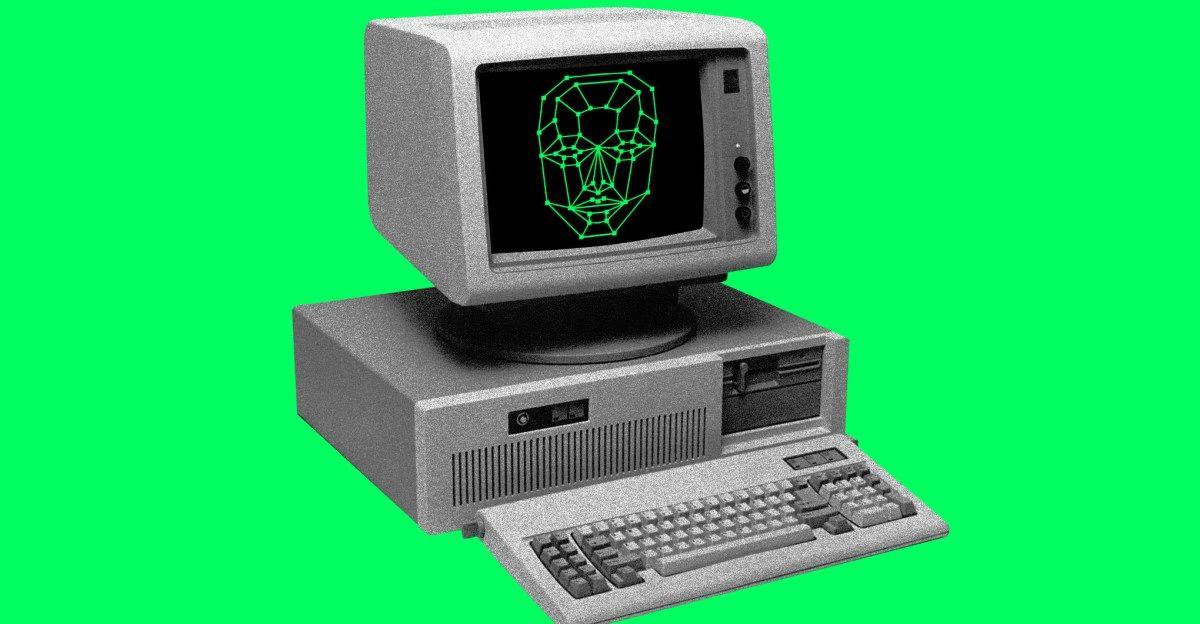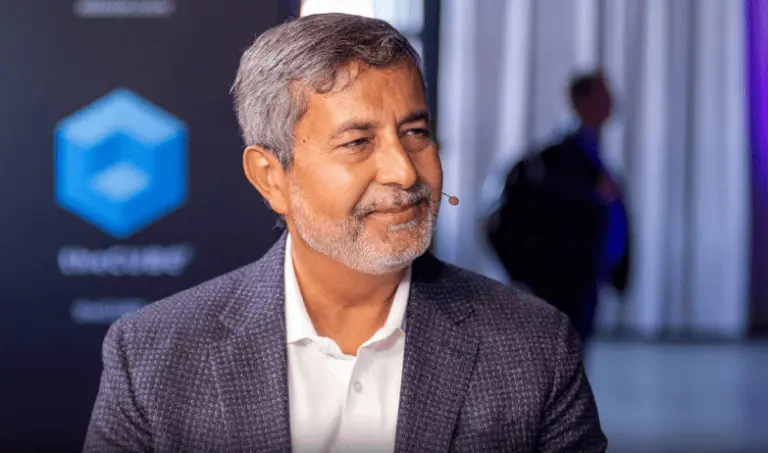The Future of Technology: AI-Driven Mobility and Pain-Free Living
2 Sources
2 Sources
[1]
Mid-day 45th anniversary special: The AI way to mobility
Technology and love for their grandparents led two teens to invent a specially designed circuit that could change the way mobility disorders are diagnosed in the future The simple act of taking a step involves 200 muscles functioning in a coordinated motion. Students might groan upon hearing yet another complex factoid during their Biology lecture. Rahi Shah and Hriday Boriawala are different. Their latest invention is built around this unique fact. ADVERTISEMENT The two 17-year old students of RN Podar International School in Santacruz are inventors of Walkfit that uses pressure sensors to monitor movement, pressure and balance. The idea, Shah reveals, was born through a familial bond. "Both of our grandparents underwent operations for mobility a couple of years ago. My grandmother had a hip replacement, while Hriday's grandmother had a knee replacement," she shares. During the recovery period, the teens observed that the senior citizens often found it difficult to express their issues or experiences. "Many older people cannot express what they experience, and sometimes, won't even speak up about it," Shah observes, "This makes it difficult for doctors or even loved ones to truly diagnose the efficacy of treatment. We do not find out till the problem is unavoidable." As always, the kids turned to technology for ideas. The duo are also students at the Omotec centre in Vile Parle, where they are familiarising themselves with coding and robotics. A close-up shot of pressure sensors on the handle It is at the Vile Parle centre that we catch up with the duo, along with Boriawala's grandparents who kindly joined us for a demonstration. Boriawala remarks, "I was already learning coding and machine learning at the centre, and I am also interested in electronic engineering." The two interests, plus a desire to help their grandparents gave them the idea of a monitoring device. Testing the equipment At first glance, the walkfit appears to be a simple walking support stick with its four-prong grip. Look closely and the wires running down the handle come into view. "The prototype is the circuitry, not the stick," he points out. "We wanted to create something small that could be easily adapted onto any walking stick. It is feasible and economical," Shah adds. It took the duo two years to create a working model. Rahi Shah and Hriday Boriawala working on their invention As they hand over the stick to Boriawala's 80-year-old grandfather, Gajendra Boriawala, we are able to observe it in operation. The stick is armed with two pressure sensors on the handle and four on the bottom grip -- one on each leg. In addition to this, it holds a module with gyro sensors towards the bottom. "These help to co-relate pressure readings with angle of tilt to predict the chances of a fall," Shah explains. The data derived from these sensors is relayed via Bluetooth to their laptop where it is displayed on a pressure heatmap, along with projected readings. The live relay of the data is analysed by a machine learning module and an algorithm coded using Python programming to derive projected analysis. "Machine learning is a neural network that derives values based on the parameters you set, and projects possible progressions," explains Boriawala. Shah reveals, "Neither of us are medical experts. So, we showed the videos, data, readings and analysis predicted to a qualified medical professional, Dr Anokhi Shah, MD, and also tested over 50 patients in several old-age homes across Vile Parle. They helped us figure out how to read this information. For instance, if point A is where the pressure reading is, then X is a possible diagnosis." A heatmap depicts the pressure points We watch the colour changes on the pressure map on the laptop with every step. Boriawala elaborates that the Force Sensitive Resistors (FSR) on the handle and foot of the stick measure the pressure applied by the holder and its weight bearing. "For instance, we learned from the doctors that if the patient has a hip problem, they are bound to lean to the front. Similarly, if the pressure on the front two prongs is beyond a defined value, then there could be an issue with their lower back," he explains. Potential benefits This opens up immense possibilities across the board. "The data will help medical professionals understand the nature of the problem and even facilitate early diagnosis of motor disabilities. They will also be able to monitor day-to-day changes, and be proactive in their treatment plans with accurate information," Shah points out. While they have been working on the invention with financial support from their families, they already are catching the eye of experts. The duo showcased it at the IIT Tech Fest and the World Stem and Robotics Olympiad (WSRO) in 2023. Armed with AI and Machine Learning, these young geniuses are already planning big. "We hope to keep working on this, and develop it into an app. Maybe the information could be sent to family or caregivers and alert them in case of emergencies, or help them monitor progress even when they are away from the patients," the Vile Parle-based Boriawala remarks. Ask them if they are apprehensive of AI stepping into everything, and the quick answer is no. "We understand the apprehension, but technology is a tool and needs to be used for the good," Shah remarks as we wrap up another walk. What is it? The walking stick is equipped with pressure and gyro sensors to track a patient's challenges in mobility, direction of tilting and pressure points. How it works? The sensors monitor the pressure and direction during every movement. The gyro sensors track the degree of tilt to predict the possibility of a fall. Who it affects/benefits? Who is it for? The technology can enable a detailed diagnosis of mobility issues using a heat map and pressure. It can also be developed into an emergency alert mechanism to help senior citizens.
[2]
Mid-day 45th anniversary special: Wonder sensors for a pain-free life
A Mumbai teenager's new-age AI solution navigates a simpler solution to diagnose an incurable genetic condition We would have compared the invention to something from Dr House or Grey's Anatomy, but then this writer was not sure if Jayveer Kochhar, a GenZ representative, would catch the reference. On the morning we visit him at his home in Juhu, the teenager is ready with his laptop to give us a display of his invention, Breathfree Bamboo Spine. ADVERTISEMENT A close-up of the internal circuitry of the sensors The story, as ever so often, begins at home. "My grandmother and uncles have been diagnosed with ankylosing spondylitis. It runs in the family," the Juhu-based Kochhar tells us. A genetic condition, ankylosing spondylitis causes an inflammation of joints and tendons. "Often, the bones and tendons fuse with each other, even in the vertebrae. Since there is no cure, the only solution is an early diagnosis," he elaborates. This usually involves a blood test to detect the presence of a specific gene variant, HLA-B27. "The test is expensive, and not available at all labs across India. Plus, I have noticed that people can get afraid of invasive examinations. They tend to ignore signs till it becomes very obvious," he points out. A Grade 11 student of the Dhirubhai Ambani International school, Kochhar is a fan of mathematics and has been learning coding since he was four years old. Having learnt about the disease, he decided to use programming and mathematics to tackle the problem. "Even when the disease has not fully progressed, it can be determined by slight changes in breathing patterns. When you have the disease, your chest does not expand as much. You struggle to open up the lungs, or sit straight since the vertebrae or the bones are inflamed or fused," Kochhar remarks. Armed with this knowledge, and after discussing his ideas with the family orthopaedic doctor, Dr Amit Joshi, the teenager set to work on 3D models in September 2023. Kochhar (right) tests the sensors on the writer's hand. Pics/Anurag Ahire Dr Joshi began the conversation with the teenager late in 2022. "The disease begins with the fusion of the joints. Often, the issue starts out as a typical back pain. It is only when the disease goes out of control that people often are referred to us. By then we have lost precious time. If we have a machine where we can actually see a holistic data of the expansion of our chest, we can pre-empt the possibilities. In a normal person, the expansion of the chest is around 2.5 cms. I suggested he add further inputs from the scapular area as well. The more we tested with patients, we discovered that the equipment does have an accuracy of over 90 per cent," Dr Joshi shared. Testing it out As we examine the equipment, Kochhar points to five button sensors. These can be attached to removable stickers, and placed on the body. "They are cheap, non-invasive and reusable. Each of these sensors has an Internal Measurement Unit (IMU) that measures acceleration and angular velocity. They are placed along five points of the body i.e. pectoral muscles, scapula blades, sternum and the spine. You might not notice, but there is displacement of the body at a certain angle and a specific velocity when you breathe," he explains. Worn directly on the skin, the sensors detect these movements and relay them to a microcontroller that transmits it further to a laptop using wi-fi signals. Jayveer Kochhar He places one of the sensors on our arm and asks us to move it. "The data is relayed live, and measured for a span of five or 10 minutes," he points to the numbers on the screen. Altogether, the five sensors relay 60 data points every second. "These are analysed in two parts. The first is the pre-processing that calculates displacement through an algorithm. The second part involves the use of set values to predict possibilities," Kochhar points out. It is in the second part that Artificial Intelligence (AI) steps in. "I used a recurrent neural network known as a long-short term memory module. The module makes observations based on its previous learnings from the gathered five-minute data sets," he explains. Thus, when it spots a reduced displacement of an individual's chest movement or scapula during breathing, it will highlight the anomaly. This data can be plotted on a graph, or as a numerical sheet. It can help in detecting multiple rheumatological disorders, says the Grade 11 student. Where does a 15-year-old learn these terms, we wonder? "I have always been curious. Plus, Dr Joshi kept offering me inputs through the testing period," he says, adding that he has already shown his invention at the finals of the International Science and Engineering Fair (ISEF) in the Los Angeles, USA, earlier this year. For now, Kochhar's inventions have been funded by the family with the scholarships and prizes adding to the purse. But the teen hopes to create this as a tool for those in need. "In villages, the condition remains undiagnosed and ignored due to the expensive tests. This is a simple tool that can be used by any GP (General Practitioner), with the set data saved on a virtual platform. That's the eventual target," he says. Despite the detailed medical knowledge, Kochhar wants to pursue computer science as a career path; a field that will be altered by AI and machine learning, we remind him. "I know. People keep telling me that AI will take over human roles. But it is dependent on data. Of course, it evolves rapidly. For instance, ChatGPT has achieved 90 per cent accuracy already. But to cross that final 10 per cent requires inputs to be more complex and detailed. This is where it lacks human imagination," the young man concludes. Till then, the future seems to be in good hands. What is it? Breathfree Bamboo Spine is a set of wearable sensors that calculate displacement of different sets of muscles and their mobility during breathing to determine early signs of possible rheumatoid conditions. How it works? Five sensors placed on the optimum positions on an individual's body relay data that is analysed by a machine learning programme to predict anomalies. Who it affects/benefits? The analyses can help detect problems in posture, erratic breathing patterns and even early detection of rheumatoid issues like ankylosing spondylitis and other forms of arthritis.
Share
Share
Copy Link
As Mid-Day celebrates its 45th anniversary, we explore two groundbreaking technological advancements: AI-powered mobility solutions and innovative pain management sensors. These developments promise to revolutionize transportation and healthcare, offering a glimpse into a more efficient and comfortable future.

AI-Driven Mobility: Revolutionizing Transportation
In the rapidly evolving landscape of urban mobility, artificial intelligence (AI) is emerging as a game-changer. As Mid-Day celebrates its 45th anniversary, we delve into the transformative potential of AI in reshaping our daily commutes and long-distance travel
1
.AI-powered mobility solutions are set to revolutionize transportation systems, offering enhanced efficiency, safety, and convenience. From autonomous vehicles to smart traffic management, these innovations promise to alleviate congestion and reduce accidents on our roads. The integration of AI in public transportation could lead to more responsive and adaptive services, catering to the dynamic needs of urban populations.
One of the key advantages of AI in mobility is its ability to process vast amounts of data in real-time. This capability enables predictive maintenance of vehicles and infrastructure, potentially reducing downtime and improving overall system reliability. Moreover, AI algorithms can optimize route planning, taking into account factors such as traffic patterns, weather conditions, and individual preferences.
Wonder Sensors: A New Era in Pain Management
Parallel to the advancements in mobility, the healthcare sector is witnessing its own technological revolution. The development of "wonder sensors" for pain management marks a significant milestone in improving quality of life for millions suffering from chronic pain
2
.These innovative sensors utilize cutting-edge technology to detect and analyze pain signals in the body. By providing real-time data on pain levels and patterns, they offer healthcare professionals unprecedented insights into patient conditions. This information can be crucial in tailoring treatment plans and monitoring their effectiveness over time.
The potential applications of these sensors are vast. From managing post-operative pain to assisting in the treatment of chronic conditions like arthritis or fibromyalgia, these devices could transform pain management strategies. By offering objective measurements of pain, they may also help address the challenges of pain assessment, which has traditionally relied heavily on subjective patient reports.
Related Stories
The Convergence of AI and Healthcare
The intersection of AI and healthcare technologies, such as the wonder sensors for pain management, opens up exciting possibilities. AI algorithms could analyze the data collected by these sensors, identifying patterns and predicting pain flare-ups. This predictive capability could enable proactive pain management strategies, potentially improving patient outcomes and reducing the need for pain medications.
As we look to the future, the synergy between AI-driven mobility and advanced healthcare technologies paints a picture of a more connected and comfortable world. Cities may become more navigable and efficient, while individuals gain greater control over their health and well-being. These advancements underscore the transformative power of technology in addressing some of society's most pressing challenges.
References
Summarized by
Navi
Related Stories
AI in Healthcare: ChatGPT and Other AI Tools Show Promise and Pitfalls in Medical Diagnosis
21 Apr 2025•Health

Smart Insoles: Revolutionizing Sports Performance and Health Monitoring with AI-Powered Wearable Technology
27 Mar 2025•Technology

AI and Tech Startups Revolutionize Healthcare in India, Addressing Critical Gaps
21 Oct 2024•Health








